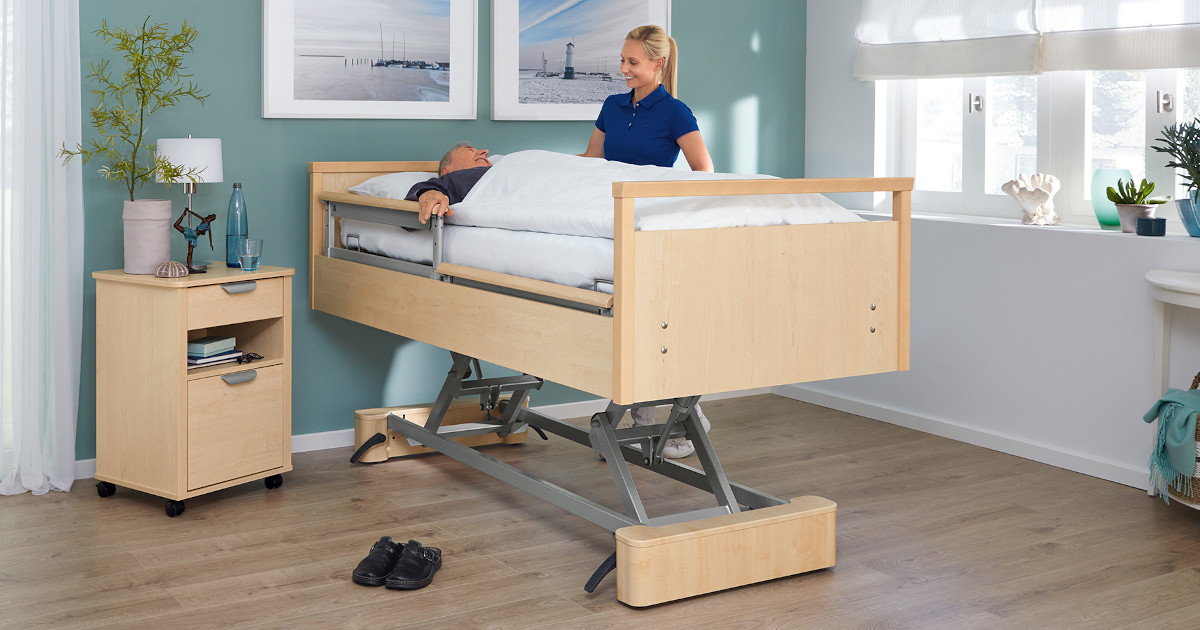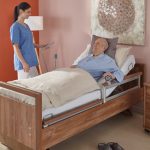The correct positioning of a bedridden resident does not only serve the relaxed lying and well-being. It can also prevent so-called secondary events such as bedsores (pressure sores). Positioning should promote movement, be gentle on skin and tissue and prevent falls. This article therefore deals with aspects of activation as well as fall and decubitus prophylaxis:
Activating aspects
For active movement in bed, the headboard is placed flat. Then the resident is asked to put his legs up and shift his weight to one side. In this position, he can push himself a little towards the headboard with his feet and then turn back on his back. After this stage movement, the resident performs the pushing up of his body with the other half of his body. These movement sequences are carried out alternately to the right and left until the desired position is reached.
Aspects of fall prophylaxis
A high risk when moving in bed is that the occupant may fall out of bed when swinging. To make work easier, the side parts of the bed are lowered during nursing activities. If the resident is being cared for by a nursing professional alone, the opposite side of the bed should be raised for safety reasons. Since the caregiver is in the room, it does not matter whether the bed side panel is continuous or incomplete. With regard to bed side panels, care must be taken to ensure that the patient does not push his arms, legs or head through struts of the bed side panel and injure himself in the process. Bed side panel coverings can help to safely prevent this danger.
Aspects of decubitus prophylaxis
The quality of nursing care for a resident in a nursing bed depends on movement, positioning and transfer techniques that are gentle on the skin and tissue. Particular emphasis is placed on the regular movement of the patient, including the promotion of his or her own movements. If individual positioning techniques are only used passively, immobility is promoted. The aim is to activate the patients as much as possible. If the nursing act of repositioning is combined with a change of linen, even more sensitivity is required for the resident. Positions and movements are experienced, assessed and answered individually by the individual resident.


